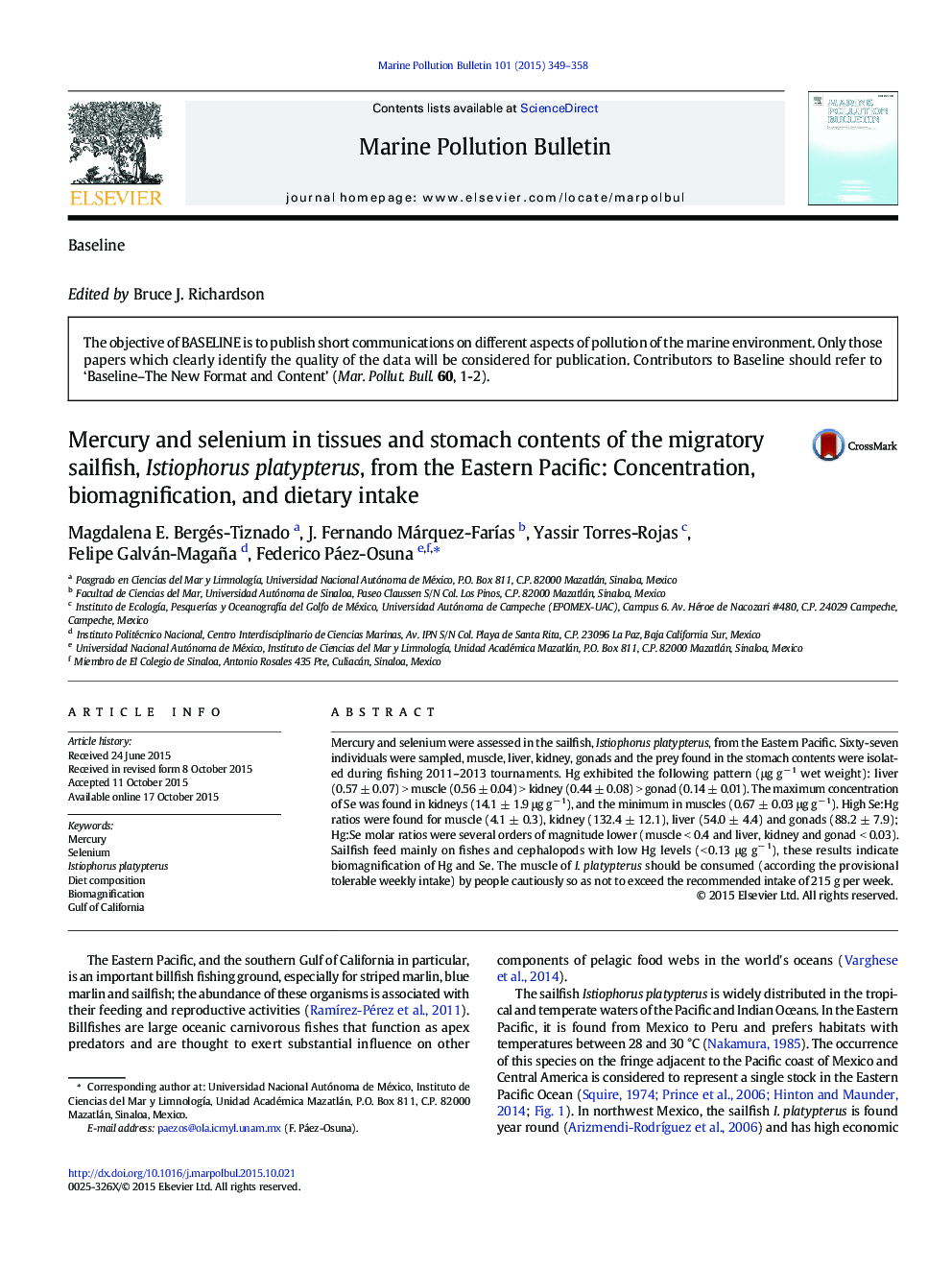| Article ID | Journal | Published Year | Pages | File Type |
|---|---|---|---|---|
| 4476620 | Marine Pollution Bulletin | 2015 | 10 Pages |
•Hg and Se were measured in four tissues and stomachs of sailfish I. platypterus.•Hg concentrations order was: liver > muscle > kidney > gonads.•Se:Hg molar ratios in all tissues were > 1.•Relationships were found between element levels, size, weight and age.•Biomagnification was evident for Hg and Se.
Mercury and selenium were assessed in the sailfish, Istiophorus platypterus, from the Eastern Pacific. Sixty-seven individuals were sampled, muscle, liver, kidney, gonads and the prey found in the stomach contents were isolated during fishing 2011–2013 tournaments. Hg exhibited the following pattern (μg g− 1 wet weight): liver (0.57 ± 0.07) > muscle (0.56 ± 0.04) > kidney (0.44 ± 0.08) > gonad (0.14 ± 0.01). The maximum concentration of Se was found in kidneys (14.1 ± 1.9 μg g− 1), and the minimum in muscles (0.67 ± 0.03 μg g− 1). High Se:Hg ratios were found for muscle (4.1 ± 0.3), kidney (132.4 ± 12.1), liver (54.0 ± 4.4) and gonads (88.2 ± 7.9); Hg:Se molar ratios were several orders of magnitude lower (muscle < 0.4 and liver, kidney and gonad < 0.03). Sailfish feed mainly on fishes and cephalopods with low Hg levels (< 0.13 μg g− 1), these results indicate biomagnification of Hg and Se. The muscle of I. platypterus should be consumed (according the provisional tolerable weekly intake) by people cautiously so as not to exceed the recommended intake of 215 g per week.
